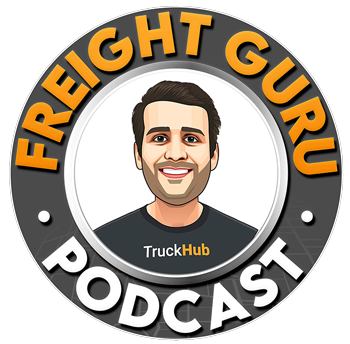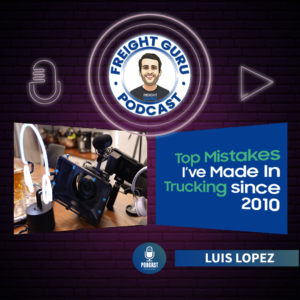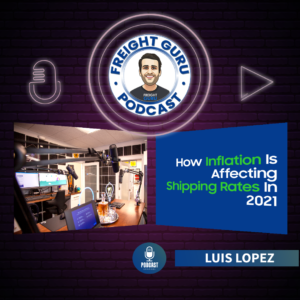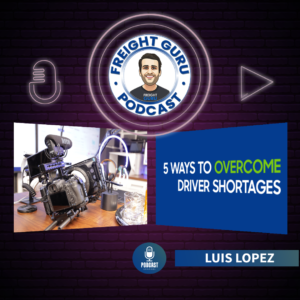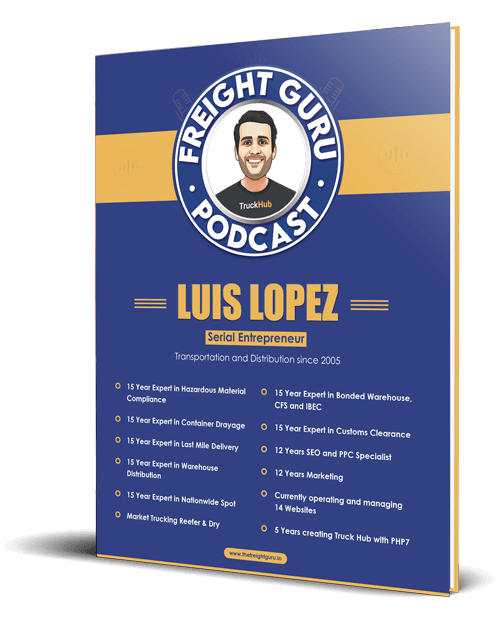Container Drayage
The world of drayage is very different from the world of nationwide trucking. It is a very fractured, mostly cottage industry, which operates almost exclusively offline. However, your first question might be, “What is container drayage?” Container drayage is the niche movement of containers between ports and distribution points, usually within a 50 mi radius.
In this episode, we will be diving into several things, the state of the drayage market, pouring over data for where freight volumes for import & export are, and looking at conditions inside the posts. By doing this, we seek to help the trucking community navigate these current conditions.
The Basics
In container drayage, you have a container and, you need a chassis. A chassis is a 20′, 40′, or 45′ piece of equipment that allows you to move a container with a truck. Most drayage happens within a 50-mile radius of the port.
We will also be talking about TEUs. What is a TEU? TEU stands for Twenty-Foot Equivalent Unit and is equivalent to one 20′ container.
The Drayage Conditions in Miami
Miami has two major ports. These are the Port of Miami and Port everglades. Both of these are seeing a significant surge of cargo because of notable delays. These were caused by both the pandemic and the Chinese new year. You can see this using SONAR®. SONAR® is a service provided by Freight Waves and allows for easy parsing of shipping data.
Statistics
According to SONAR®, Miami sees the 10th most traffic of any US port with a current ocean shipment index of 162 for imports. The export volumes index is at 193and the ocean TEU volume index is at 150.33. Most of the recent increase has been coming out of Taiwan and Indonesia.
Improving Efficiency
As a community, we need to ask how we can better set up for drayage efficiency? One of the key ways to improve is by boosting communication. Most shipments into a port can only stay for 4-5 days before you have to start paying fees. One should avoid that whenever possible. For this reason, it is best to ensure that you get arrival notices 5-7 days before the ship comes into port. You want 3-5 days of notice before the cutoff date for exports.
Fees
There are two types of fees that you get charged as a result of delays. You’re charged demurrage fees because of taking too long to remove the container from the port. You pay per-diem fees outside of the port. There will be some caveats for large volume customers. 95% of the market has four days to move the container out.
The State of the Industry
Container drayage is super fragmented. People do not use load boards, and truckers live in the vicinity of where they work. You will not find drayage on load boards like DAT or Truckstop. You will have to go through and look for drayage companies in your area. Load Match is an excellent source. They have a Drayage Directory, which allows you to look at any city with a notable terminal and find drayage providers.
They show phone numbers and websites. On top of that, the services offered by that company are detailed. That is about as close as you’ll get to a load-board as you’ll get in drayage. Furthermore, you can see how many clicks each company gets, so you can see how established a player is.
Benefits of Sonar
SONAR® allows you to look at which importers/exporters are moving from where so you can get a sense of who your customers might be. If we take a look at CH Robinson, for example, we see that they move the vast majority of their fright into the port at Long Beach, CA. In contrast, City Furniture moves 87% of their imports through the Port of Miami. You can also see that they use Maersk for 62% of their shipments.
Overall, the drayage industry is highly fractured and hyperlocal. Every provider will be different. As a drayman, you want to build solid relationships with reliable freight forwarders, brokers, and shippers. As an importer/exporter, you need to communicate with your draymen. Give your draymen five days notice before a ship comes in and 3-5 days before the export cut-off.
Thank you for reading, and make sure to check out the full podcast available on our website!
Also, check out our preferred drayage provider here!
The Freight Guru
ll@thefreightguru.io
